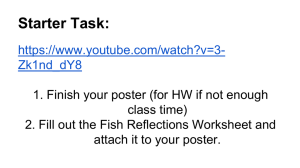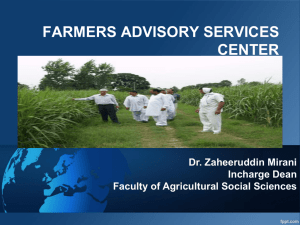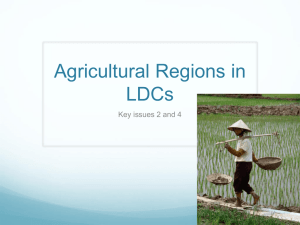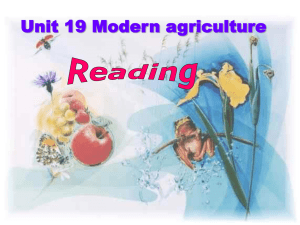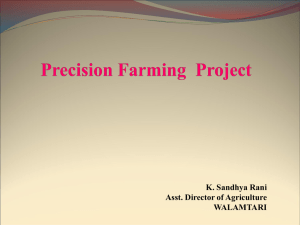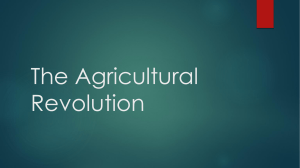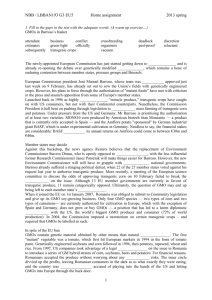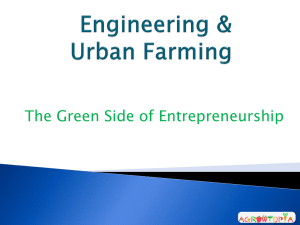Food from the Land
advertisement
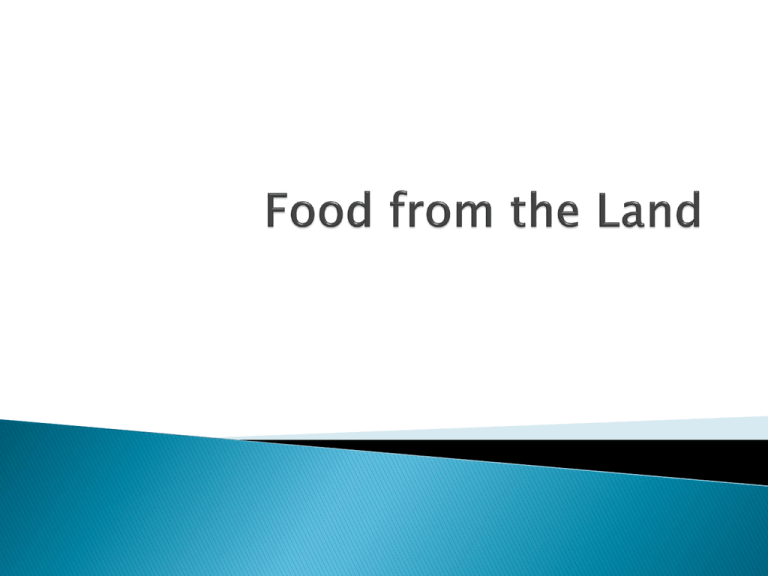
How has television influenced public response to famine and world hunger issues? In 1984 on TV we saw images of a famine in Ethiopia. This was not the first famine, nor the worst that ever occurred, but for the first time that a famine had been brought “live” into the living rooms of Europe and North America. Bob Geldof, an Irish rock star, created a song to raise funds for this famine. It became a best-selling record. It was called… “Do they know it’s Christmas” He then created the first ever Live Aid concert (global rock concert/telethon). The concerts aired on TV where viewers phoned in donations – it raised $150 million. Ironically, at the same time, many farmers were producing too much grain, oil seeds, livestock & other foodstuff, that prices were so low; they were not making enough money to cover their costs. Famine is a temporary situation in which a country or region does not have enough available food to feed its population. This is caused b/c not enough food can be grown, or food distribution is unequal. This leads to death from starvation or diseases. Famines are caused by natural causes (drought) or human (civil wars). Starvation is an extreme form of hunger in which people suffer from a serious or total lack of energy and essential vitamins and minerals. The body wastes away as tissue is consumer to provide protein and energy. Malnutrition is a condition in which health is damaged by an unbalanced diet. The imbalance may result from a diet that includes either too much or too little of one or more essential nutrients over an extended period of time. Undernourishment is when diet lack one or more vital nutrients in the quantity that is needed for the body to develop and function properly. Developed countries (MDC) often send food aid to developing countries (LDC) ◦ Give two different reasons why a MDC such as Canada might choose to do this? Answer: Canadian government gives out of a desire to help people who are hungry. Also, Canadian farmers, sell grain and other foodstuffs to the country receiving aid. ◦ How might food aid disrupt a LDC’s local economy? Answer: The arrival of “free” food can seriously disrupt the local agricultural markets b/c local farmers are not able to earn as much $ since food is dumped on the market. How could donor countries avoid disrupting a LDC’s economy while still providing aid? Answer They could buy the food that will be disturbed in the region where it will be consumed. This provides enhanced incomes for farmers in that area. Why does this not happen very often? Answer Within Canada this doesn’t occur because government politics in farming areas would have difficulty justifying the purchase of agricultural products in a foreign country at a time when Canadian farmers are suffering from low incomes. Looking on page 262 – 264 – create a timeline. Be creative & use colour… In Canada we are use to having a reliable & inexpensive supply of food. But very few people are linked to the farming community – only 4% of the population is farmers. Agriculture depends on the interactions of a number of natural systems… ◦ ◦ ◦ ◦ Climate Soil Topography Biology Climate Systems Insufficient solar input can limit what is grown Too little moisture – insufficient humus develops Soil Systems Too much moisture – nutrients are lost to leaching Insufficient precipitation can limit what is grown Agricultural Success Helpful organisms improve farming Land that is too hilly will suffer from serious erosions Topographic System Land that is level with a high water table can become waterlogged Destructive organisms damage farming Biological Systems Subsistence farming: grow crops and raise livestock to meet the immediate food needs of their family. Produce many agricultural products often on small farms Dominate form of farming in developing countries Cash-crop farming: specialize in producing only a few products, even on large farms. The products produced are not used by the farmer. Intensive agriculture: is farming on a small amount of land in a concentrated fashion with the use of large amounts of labour and capital. Labour & capital are needed for the application of chemicals, & to plant & maintain the products. Producing a higher crop yield per unit of land then extensive. Extensive Agriculture: uses large amounts of land with limited amounts of labour and capital. Crop yields depend primarily on natural soil fertility, terrain, climate and availability of water. Producing a lower crop yield per unit of land then intensive. Every type of agriculture in the world can be found somewhere on this plane… Intensive Cash-crop farming Subsistence Farming Extensive GMO – or a genetically modified organism or transgenic organism When biotechnologist move desirable genes from one organism to another More nutrients can be added to a staple like rice Tolerance for certain herbicides (chemicals to kill weeds) Resistant to insects & Limit use of insecticides to reduce amount of pollution Transgenic Agriculture: In 2003, 6 countries cultivated 99% of the total global transgenic crop area of 67.7 million hectares. The US cultivated 63% & Canada 6%. From 1996 to 2003 – the area of transgenic crops grew from 1.7 to 67.7 million hectares. New strains of animals that carry new genetic info, such as: ◦ Animals that are genetically modified to grow faster and resist to disease ◦ Transgenic cows produce more milk on less feed ◦ Transgenic pigs are more feed-efficient & produce leaner meat ◦ Sheep & pigs can even be modified to produce human proteins, such as insulin in their milk ◦ Used for research into diseases such as cancer & muscular dystrophy Know as “Frankenfoods” Issues surround the topic of ethics & are more controversial in Europe than NA Major fear – transgenic crops that kill specific types of insects may cause the creation of “superbugs” that are resistant to the effects of pesticides (& superweeds) Who owns the technology? The companies who conduct the research do – therefore research is guided by profit, not solving issues like world hunger Terminator seeds – is when the plant cannot seed, results in farmers buying seeds annually = greater profit Disruption of natural environment – if seeds mix with natural environment they can take over the natural order Not enough research is yet known if transgenic crops are safe In groups you will be looking at an assigned issue and you will be presenting that issue to the class with the following information: Title What is the issue? How did this issue come to be? What are the pros and/or cons surrounding the issue? Is there anything being done to solve/better the issue? Come up with some solutions that can help remedy the problem. ◦ Your group’s position on the issue and an explanation why? (If there are more than one positions on the issue present both with their reasoning) ◦ ◦ ◦ ◦ ◦ ◦ World Agricultural Patterns: Assignment – page 275-277 Q 1-6 page 280 1-2


